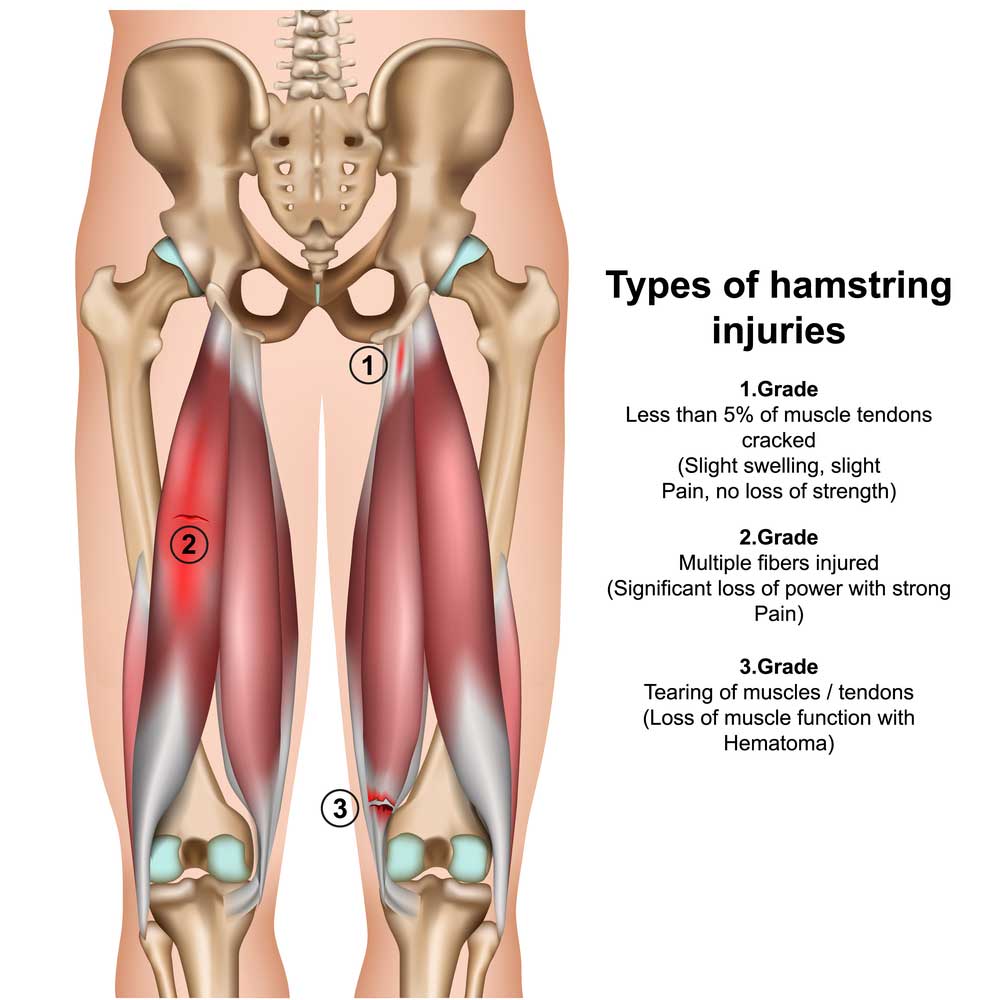Hamstring Injury Specialist

Activities that involve a lot of running, jumping and sudden starting or stopping can result in hamstring injuries. This type of injury occurs when one or more of the muscles become overloaded and result in a pull, strain or tear of the muscle. Hamstring injury specialist, Doctor Benedict Nwachukwu provides diagnosis as well as surgical and nonsurgical treatment options for patients in Manhattan, New York City, NY who have experienced a hamstring injury. Contact Dr. Nwachukwu’s team today!
What is a hamstring injury?
Made up of a group of four muscles and their tendons, the hamstrings are responsible for flexing the knee joint and extending the thigh to the backside of the body. They are used in walking, running and many other physical activities. A hamstring injury is a strain or a tear to these tendons or large muscles at the back of the thigh. Hamstring injuries occur when one or more of the muscles become overloaded. The muscle may pull in a strain, tear, or become frayed. Hamstring injuries happen most often during activities that involve a lot of running, jumping and sudden starting or stopping. Dr. Benedict Nwachukwu, orthopedic hip specialist, has special training and experience in helping patients in Manhattan, New York City and the surrounding New York boroughs who have suffered a hamstring injury.
What are the types of hamstring injuries?
Dr. Nwachukwu treats all types of hip pain and hamstring injuries, including:
- Grade 1 tear: A hamstring pull, strain or sprain, the muscle and tendon are still in their correct anatomical position, but may have been stretched beyond their normal capacity. Grade 1 injuries are accompanied by muscle tightness in the back of the leg but most patients are able to walk normally. Mild swelling and muscle spasms may be present.
- Grade 2 tear: A moderate strain or sprain with a greater number of injured muscle fibers. Grade 2 strains will affect a patient’s walking pattern, often show bruising and is tender to palpation
- Grade 3 tear: A complete tear to one or more of the hamstring muscles. Walking is often difficult and bruising and swelling begins right away. Grade 3 tears usually require surgery to repair the torn muscle(s) and/or tendon(s).

What is a chronic hamstring injury?
Located in the buttocks at the bottom of the pelvic bone, the ischial tuberosities, more commonly, the “sitting bones,” are the connection points for the hamstring tendons which then connect to the hamstring muscles. These tendons are prone to injury, particularly in activities that require repetitive motion. Also called hamstring muscle tendinopathy, this chronic injury occurs when the tendons that attach the hamstring muscles to the bone become inflamed. When this happens, the tendon will swell and can become very irritated. When tendinopathy progresses, the outside of the tendon can thicken and if the tendon becomes too inflamed, it can easily tear.
Chronic hamstring tendinopathy pain usually begins gradually and can be worsened by simple activities such as prolonged sitting, standing or walking. Most of the time, this type of hamstring injury can be healed with physical therapy and proper stretching can help prevent it.
What are the symptoms of a hamstring injury?
The most common symptom of a hamstring injury is deep pain in the buttock. Other symptoms include:
- Tenderness, swelling and/or bruising
- Sharp, sudden pain in the back of the thigh
- Pain when sitting
- Pain with repetitive activities
- Weakness in the leg, especially when walking or bending
- Pain in the leg and back of the thigh when walking, straightening the leg or bending from the waist
Are there ways to prevent a hamstring injury?
Hamstring strains, sprains and tears most often occur in athletes, but can affect non-athletes as well. There are ways to prevent a hamstring injury, including:
- Warm-up – Proper warm-up and stretching before physical activities that involve running, jumping or walking.
- Strengthen the gluteus muscles- Glutes and hamstrings work together, if the glutes are weak, the hamstrings can become overloaded and more likely to be injured
- Increase the intensity of workouts slowly – Athletes should increase the intensity of their workouts no more than 10% a week to avoid injury.
- Stretching exercises – Stretching that carefully targets the hamstrings should be done both before and after exercises and sports play.
How is a hamstring injury diagnosed?
Dr. Nwachukwu diagnoses a hamstring injury by performing a physical examination and a review of symptoms along with a thorough medical history. He will check for any visible bruising and swelling in the injured leg. An X-ray and MRI may also be performed to determine the extent of the injury and to properly classify the injury.
Can a sprained or torn hamstring heal without surgery?
The majority of hamstring sprains and partial tears can be treated without surgical intervention. Some conservative therapies may include:
- RICE – Rest, Ice, Compression and elevation
- NSAIDS – Non-steroidal anti-inflammatory medication
- Immobilization – Restricting movement with a neutral position, allows the body to heal.
- Physical therapy – Stretching exercises and muscle building to restore strength and range of motion.
Does a hamstring tear require surgery?
Hamstring injuries that are classified as a Grade 3 tear typically require surgery to reattach the tendon that has torn away from the bone. If the tear has occurred within the hamstring muscle, Dr. Nwachukwu will sew the torn pieces back together, using sutures and suture anchors to re-attach the tendon to the ischium.
For more information on hamstring injuries and hip pain, please contact the office of Benedict Nwachukwu, MD, orthopedic hip specialist, serving Manhattan, New York City and surrounding New York boroughs.